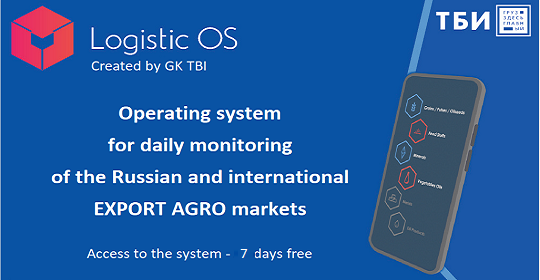According to the US Department of Agriculture, the Russian Federation can export up to 51 million tons of wheat in the current 2023-2024 season.
This figure is 1 million tons more than the previous forecast of the American department.
At the same time, Russia really has all the capabilities to export such volumes.
For example, in 2023, about 143 million tons of grain were harvested, of which about 93 million tons were wheat, Rosstat reports.
At the same time, its own needs for wheat do not exceed 43 million tons. Accordingly, truly great opportunities are opening up for supplying grain abroad.
Russia is becoming the largest grain exporter
Back in the 1999-2000 season, the situation was completely different: Russia was in fact a net importer of grain, that is, it imported more than it exported. However, for the last 4 years it has held first place in terms of export volumes.
At the same time, the Russian Federation has been significantly expanding exports in recent years, including to Western countries.
And this happens due to competition with other suppliers who are forced to give up their positions to Russia. These suppliers include the following countries: EU, USA, Argentina, Australia, Canada.
For example, Brazil has traditionally purchased wheat primarily from Argentina. However, in the first 5 months of the current season, supplies of Russian wheat to Brazil turned out to be larger in volume than Argentinean wheat.
This is largely due to the fact that Argentina experienced a drought, which reduced the country’s harvest and export capabilities.
Supplies of Russian wheat to Mexico are also active; last season they amounted to 600 thousand tons, this season – already 400 thousand tons, although it is far from over.
By supplying its products to Mexico, Russia is thereby ousting the United States from this market.
By the way, Russia has previously been an important supplier for Mexico, but over the previous couple of years it made virtually no supplies there.
Despite the fact that the distance from Russia to the listed countries is significant, it manages to remain competitive due to the fact that it offers lower prices, experts note.
In general, year after year there is an increase in the volume of Russian supplies to foreign markets.
For example, during the first half of the current season, the Russian Federation exported about 37 million tons of grain, which is 11% more than the previous season.
As for wheat, its exports increased by 3%, to 30 million tons.
Currently, exporters are being “driven” by the export quota, which will come into effect on February 15 and amount to 24 million tons.
However, it is possible that by that time such volumes of grain will be exported from the country that the quota will ultimately remain unselected.

